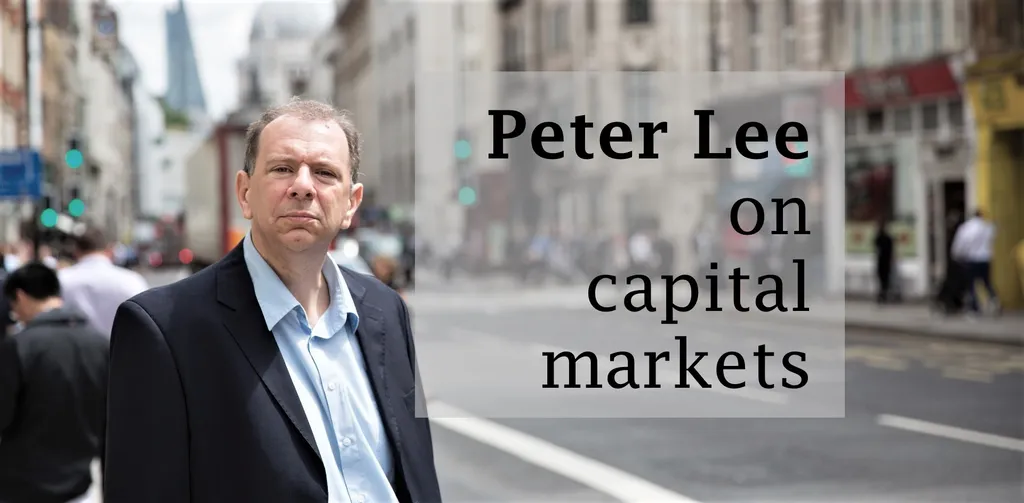Euromoney spent most of June in meetings with bank chief executives and heads of investment banking discussing our Awards for Excellence for the period from the start of the second quarter of 2021 to the end of the first quarter of 2022.
That was a boom. And we all know what follows those.
Senior bankers are reluctant to speak on the record about what they see coming. They don’t want to scare the horses when they are already nervous and set to bolt. But the mood is darkening.
Investment banking fees were 33% down in the first quarter. Daniel Pinto, president of JPMorgan, told a recent investor conference they will be down 45% in the second.

The best that bankers can say is that markets are still functioning. There have been no big discontinuous price gaps or illiquidity on the way down, so far. The descent into bear markets has been orderly. But big excesses have to be worked out of a system that until recently was valuing companies on multiples of revenue rather than of profit.
Some of the big payment and blockchain fintechs that went public have lost 70% of their market cap. They’re good companies that never warranted such high valuations. In the wildest markets of all, which grew on an excess of greed and risk appetite, it has been even worse. Some cryptocurrencies have gone to zero. Special-purpose acquisition companies (Spacs) are over.
Equity capital markets (ECM) volumes are way down and could be 75% lower this year than last. There is not much happening in high yield and leveraged lending, other than the big underwriters trying to shovel inventory off their books, as they cut their risk appetite. Investment grade remains open for now.
It is good that corporations extended the average duration of their liabilities and prepared their balance sheets for tough times during Covid. That may come to be seen as a valuable stress test.
Non-bank lenders
But it remains to be seen how the big non-bank lenders, such as the credit funds, will behave when default rates pick up. Banks have been lending more to credit funds and their diverse portfolios, rather than directly to companies. It is reminiscent of collateralized debt obligations (CDOs) in the run up to the great financial crisis.
Will credit funds ease borrowers through the worst part of the credit cycle or enforce security?
M&A dealmakers have been sustained by some large transactions announced in the first quarter and by the excess of dry powder at private equity firms now looking for bargain valuations, but willing to accept lower returns.
But corporate confidence is shot. The optics say M&A is in for a top-five ever year, but that business is running on fumes.
Wealthier consumers are saving less to meet higher prices. Poorer ones are going back into debt. That won’t last if fear of unemployment kicks in. And even while it does, it will sustain inflation and make life harder for central banks that are already losing credibility.
Why should anyone believe anything the Fed says now, or the Bank of England, which guided to rate rises last year and then lost its nerve?
The US Federal Reserve had all but preannounced a 50-basis-point hike in June before panicking at a high consumer price index (CPI) print – not its core measure – and leaking news of a 75bp rise to the Wall Street Journal.
Why should anyone believe anything the Fed says now, or the Bank of England, which guided to rate rises last year and then lost its nerve?
High inflation began with the loose monetary and generous fiscal response to pandemic lockdowns, which boosted demand for consumer durables that strained supply chains could not meet.
Central banks should have acted sooner when the second shock, Russia’s unprovoked attack on Ukraine, caused stunning rises in commodity prices, notably energy and food. Transitory became persistent. Nations have to prioritize security of supply rather than the price of supply.
In the months to come, central banks will have to hike from far behind the curve. When they get to the so-called neutral rate, inflation will likely still be high. Cutting consumer demand for goods won’t do much to curb high energy and food prices.
There is an unfortunate echo from the oil shock of the mid 1970s when initial efforts to raise rates and choke off inflation led to mild recession, but weren’t enough, and at the start of the 1980s, Paul Volcker had to deliver shock and awe.
Recession
We are unlikely to get out of this cycle without a recession. A soft-landing now looks a faint hope, and the question becomes how deep and long-lasting the downturn will be and how high unemployment will go. That is what the bankers who see millions of customers’ finances and spending patterns are telling us.
The big banks will hope their markets businesses can continue to capture some benefit from volatility that steers clear of outright panic. But dealer balance sheets are small compared to the overall size of markets and it is a mistake to confuse market volumes with ample liquidity.
The structure of markets has changed since the great financial crisis, with less dealer intermediation to ease declines until smart money comes in to seize bargains. The big tests still lie ahead.
Rates at close to zero for almost 25 years have sustained high valuations and made capital raising easy. If markets fall into dysfunction, central banks will have to step in, but this time with less power.
This is a paradigm shift.




